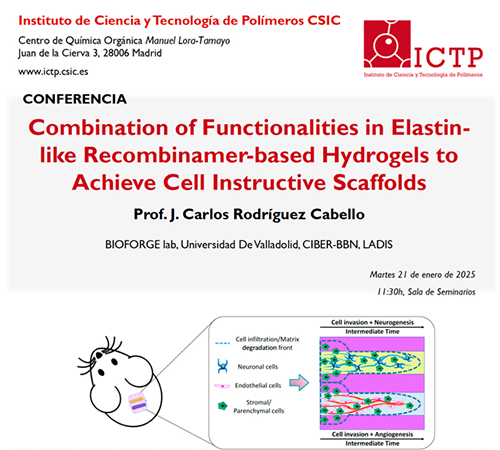Combination of Functionalities in Elastin like Recombinamer based Hydrogels to Achieve Cell Instructive Scaffolds
Prof. J. Carlos Rodríguez Cabello
BIOFORGE lab , Universidad De Valladolid, CIBER BBN, LADIS
Abstract
Biomaterials are designed either through synthetic or natural approaches. Synthetic polymers are engineered for specific properties but often lack complex functionality and biocompatibility. Natural polymers exhibit intricate functions but limited compositional control, sometimes leading to unexpected outcomes. Ideally, a biomaterial should combine high functionality with predictable, designed attributes. Current strategies attempt to balance these qualities by post modifications or blending, yet success is limited.
Recombinamers represent a breakthrough solution. They are produced as recombinant proteins from synthetic genes, recreating the functionality of natural proteins with full control over composition. Consequently, recombinamers surpass the mid point between synthetic and natural materials, harnessing the best attributes of both. Elastin-like recombinamers exemplify this concept. By engineering specific peptide domains at the gene level, researchers can tune mechanical strength, cell adhesion, protease sensitivity, and other properties within a single molecule. This advanced design yields sophisticated scaffolds that foster remarkable cell material interactions and enhanced therapeutic outcomes. Ultimately, these biomaterials open new avenues in tissue engineering and other biomedical applications.
